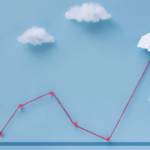This website uses cookies so that we can provide you with the best user experience possible. Cookie information is stored in your browser and performs functions such as recognising you when you return to our website and helping our team to understand which sections of the website you find most interesting and useful.
Work Shouldn’t Hurt: Resources for Workplace Bullying and Psychological Safety

Did you know that 75 percent of workers have been affected by workplace bullying, either as a target or a witness? Workplace bullying is four times more common than either sexual harassment or racial discrimination on the job. Understandably, bullying not only suppresses the potential of talented people, which harms the organizations they work for, it has direct effects on the mental health and wellness of those involved.
While bullying can be overt, often witnesses and targets are not aware that the bad feeling they are encountering at work is the effect of covert bullying, or that there are ways to protect themselves from it. In honor of National Bullying Prevention Month, I am going to show you how to recognize bullying at work, so that you can take action to support yourself and others. And I’m going to list resources you can use to encourage yourself and others to help create a safe workplace. Taking a safe workplace a step farther, I’ll show you the meaning of psychological safety, and how it increases performance and reduces burnout and turnover.
What is workplace bullying?
According to the Workplace Bullying Institute (WBI), “workplace bullying” is repeated, health-harming mistreatment of one or more persons (the targets) by one or more perpetrators. It is abusive conduct that is
- threatening, humiliating, or intimidating
- work interference (sabotage) that prevents work from getting done, or
- verbal abuse.
Bullying is characterized by
- regular repetition
- ongoing duration
- escalation with increasing aggression
- intent to harm, and
- disparity in power.
If you or someone close to you has been bullied—as a child, as a member of a minority community or protected class, online, or just being in the wrong place with the wrong person—you will recognize the similar and harmful effects of workplace bullying. Emotional stress, declining mental health, physical symptoms and flagging work performance all surface as a result. “The top eight effects of bullying on targets are stress, depression, exhaustion, insecurity, shame, nightmares, poor concentration, and sleeplessness,” says Dr. Judy Blando, workplace bullying behavior expert and author. Equally as distressing is the financial toll and added labor an unsafe workplace generates for the organization. According to the WBI, interpersonal stress in the workplace leads to high turnover, low morale, increased efforts at a continual recruitment, and higher rates of legal actions taken against an organization.
Take action against bullying at work
If you’re being bullied or witnessing it at work, don’t silence yourself and don’t let it continue. Say something right away with the following actions:
- Call attention to the bully’s actions directly, calmly and professionally.
- Although bullying isn’t illegal, you can find out if your company has a policy against harassment or abuse. Being able to cite specific taboos about bullying in your employee handbook strengthens your case.
- If it continues, speak to your boss (as long as he or she isn’t the bully) or HR department (as long as the one bullying isn’t part of the organizational rule compliance structure). If all else fails, consult an attorney who can give you the legal advice you might need on how to handle workplace bullying. Or check out the helplines and websites below.
Technology and social media have made it possible for bullying to expand beyond the hours
at work to torment people 24/7. And of course, many of us experienced bullying as children and are likely still carrying the scars of those experiences. It’s easy to believe that bullying is a normal part of the environment, and to learn to expect nothing better. That’s not the case.
Think about how you can take action this month to reduce bullying at your workplace or in your community. These valuable resources can help:
- Workplace Bullying Institute Comprehensive, evidence-based and practical solutions for everyone, from individuals to institutions to lawmakers
- Not In Our Town Uses film, social media and organizing tools to help local leaders build diverse cities and towns, where everyone is encouraged to participate
- Stop Bullying A .gov site to support identifying and preventing bullying
- The Cybersmile Foundation Committed to digital wellbeing and tackling all forms of bullying and abuse online
- Stomp Out Bullying An exhaustive list of bullying resources and hotlines for all kinds of bullying and all kinds of people.
- STOP BULLYING NOW HOTLINE: (USA) 1-800-273-8255. Helpline set up by U.S. Department of Health and Human Services. Available 24/7.
Psychological safety at work
Let’s look at what feeling safe in the workplace can generate. In my book, Wired to Connect, I found that one of the biggest differentiators of peak performing teams is psychological safety. This is not the mere absence of intimidation, harassment or bullying. Harvard’s Dr. Amy Edmondson discovered this concept and her research showed that it’s what creates the climate for teams to do their best work. She defines psychological safety as, “a sense of confidence that the team will not embarrass, reject, or punish someone for speaking up with ideas, questions, concerns, or mistakes. It is a shared belief that the team is safe for interpersonal risk-taking. It describes a team climate characterized by interpersonal trust and mutual respect in which people are comfortable being themselves.”
The success of the group and the larger organization often depend on people’s ability to speak up, noting potential threats to the group’s or organization’s success. In fact, in Edmondson’s study, the highest-performing teams also had the highest reporting rates for errors. This might seem paradoxical but it’s actually the sign of a very healthy team. When people feel safe enough to mention their errors it means they are also holding themselves accountable, and the whole group benefits from learning from the experience, which supports the team’s success. In addition, when errors are acknowledged, they can be addressed and fixed, rather than ignored to fester into bigger problems later.
Yet, the reality is that many people stay quiet for fear of being embarrassed, rejected, or punished. If you review recent headlines it’s likely you will find stories where someone stayed silent and the consequences were devastating or even fatal. In the investigation following the Columbia Shuttle disaster, it became clear that NASA harbored a culture where employees did not feel comfortable raising concerns to their supervisors (Edmondson features court transcripts in her book Teaming). This type of unhealthy team can be found in workplaces of all kinds from operating rooms to boardrooms.
For this reason, psychological safety is especially important—I would argue crucial—for all teams but especially those operating in high levels of uncertainty and whose members are interdependent.
The best teams and leaders empathize
Charles Duhigg, the author of The Power of Habit, detailed the significance of psychological safety in his 2016 article for the New York Times. He recounts the findings from Google’s Project Aristotle, a massive global study of their teams and what distinguishes the best from the average and poor. They replicated Edmondson’s findings, discovering that psychological safety was more important than any other factor including the quality or performance level of the individual members. Specifically, they discovered that the best teams did two things: they engaged with each other in a consistent practice of empathy, and ensured that every member was heard. This went beyond inviting people to share their thoughts, to actively seeking out every member’s contributions.
Dr. Edmondson calls this behavior “teaming,” a different way of engaging with each other that enables and empowers teams to do their best work, with the help of strong leadership. I like that it moves the word team from being a noun to a verb, something that every member participates in.
In addition, Edmondson notes that the leader must actively create psychological safety because their position of power or status naturally suppresses a group’s ability to speak up. Effective leaders take intentional steps to invite opinions, ideas, challenges, and critiques.
Psychological safety is the most important skill
When training team leaders and managers I emphasize that the ability to create psychological safety is the most important skill they need to have. Yet most people don’t even know what it is, let alone how to create it. And we certainly are not measuring teams or their leaders for their efforts in this area. But we should.
It’s important to note that psychological safety is not about being universally liked by others, or protected from opinions or beliefs that you find uncomfortable. Edmondson’s definition defines psychological safety as
“a sense of confidence that the team will not embarrass, reject, or punish someone for speaking up with ideas, questions, concerns, or mistakes. It is a shared belief that the team is safe for interpersonal risk-taking.”
In other words, the group won’t penalize someone for speaking up. Period. They might still disagree, and might find what others say incredibly uncomfortable, but a healthy team welcomes the input and feedback because it might just be the game changer for success.
To continue Edmondson’s definition of psychological safety,
“It describes a team climate characterized by interpersonal trust and mutual respect in which people are comfortable being themselves.”
It’s about respecting and trusting people at work, which is about finding value in what they contribute to the group’s efforts and being able to count on them because they are reliable.
Together, we must all take responsibility for creating workplaces that not only have zero tolerance for bullying and harassment, but that create the environment for us all to do our best work.
Related Blogs
JOIN OUR COMMUNITY
Be the first to know of Dr. Britt Andreatta's latest news and research.






